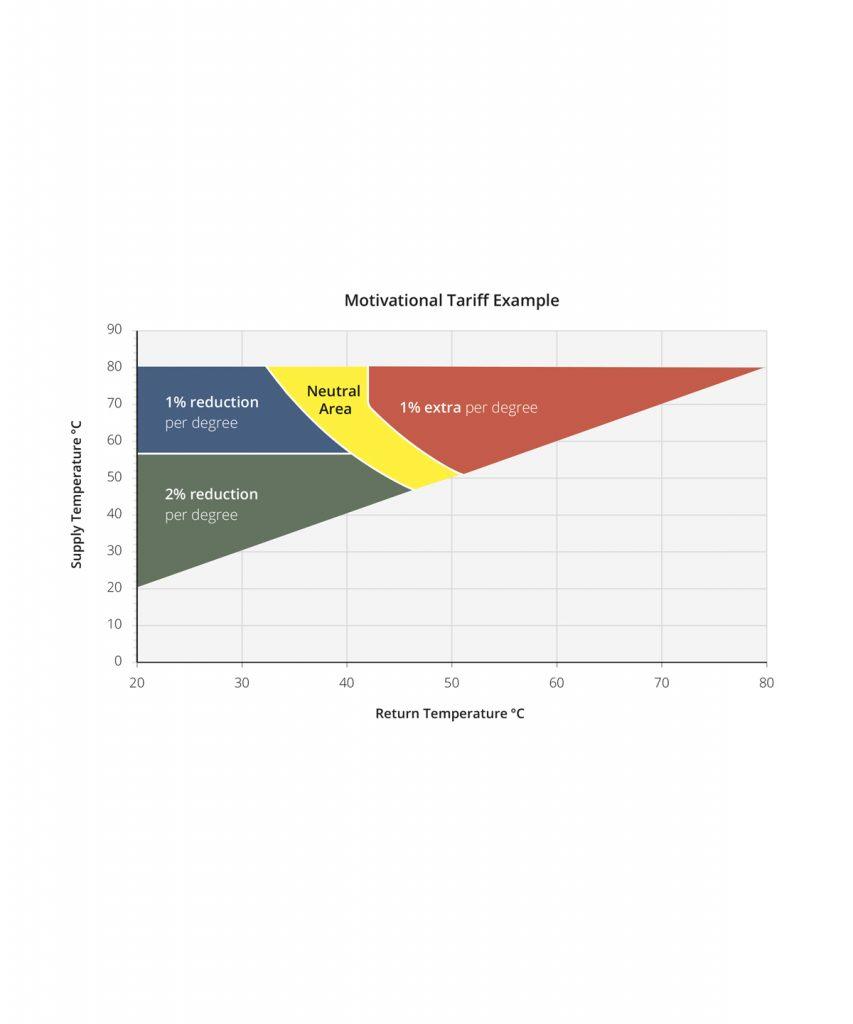Motivational Tariffs in Heat Networks
The key to making UK heat networks cheaper and more efficient is creating smarter incentives.
In times of skyrocketing fossil fuel costs, energy shortages, and looming climate targets, it’s no surprise UK households are crying out for cheaper (and ideally, greener) forms of space and water heating.
This demand is accelerating a national shift from individual gas boilers to district heating networks utilising sources such as heat pumps, CHP, waste heat, and renewable energies. Today, heat networks serve around half a million UK customers, forming the foundations of a more affordable and democratic energy landscape.
Despite these benefits, the communal nature of heat networks can be something of a double-edged sword. When they are performing well, all users benefit from lower costs and a smaller carbon footprint. But when there are weak links in the chain – such as homes with unbalanced heating circuits, poor insulation, or badly commissioned systems – everyone pays the price.
To complicate things further, engaging with individual customers and accessing their properties to perform upgrades can be difficult, if not impossible.
One of the key performance indicators of a heat network is the temperature of the water returning to the energy centre – and every degree counts. Higher return temperatures increase heat losses, reduce plant efficiency, shorten pipe lifespans, and raise overall running costs. Conversely, lower return temperatures improve the economy and longevity of the entire system, allowing operators to invest in upgrades and pass savings on to customers.
However, while operators dictate their supply temperatures and can reduce them during lower demand, the return temperatures are determined by the individual users. In an ideal scenario, dwellings receive hot water at around 60-70°C, extract as much heat as possible, and return it at a modest 30-40°C.. The difference between the supply and return temperature, Delta T, is a critical number that operators continuously seek to increase by driving return temperatures down.
“Motivational tariffs don’t just reduce heat network costs and emissions; they fundamentally change the way users think about their energy.”
In response to this challenge, some heat networks have introduced motivational tariffs – a relatively new concept in the UK, but one with tremendous upside. These tariffs minimise costs and emissions via a two-pronged approach: penalising customers for higher return temperatures while offering discounts for lower return temperatures. Operators may also include separate charges for water volumes drawn from the network and peak demand charges based on maximum flow rate. The result of these combined elements is a more transparent and equitable network for all users.
Under a motivational tariff model, a network operator may set an average annual return temperature of 35°C. Then, a customer averaging 30°C would receive a discount (based on total megawatt-hours consumed), while another averaging 40°C would receive a penalty charge – and a clear incentive to improve their efficiency. Through digital metering, both customers and operators can access real-time temperature data and cooperate to make upgrades that benefit the entire network.
In addition to enhancing performance, motivational tariffs are cost-effective for operators, who can use penalty income to fund discounts for more efficient customers. In the spirit of fairness, the operator may also choose to cap pricing variations so that bills cannot rise or fall by more than a set percentage.
Motivational tariffs may be new to the UK, but they’ve already proven highly successful abroad. For example, in Denmark – often the poster child for social innovation – motivational tariffs have been used for over 20 years, during which time average return temperatures have dropped by an incredible 10°C. In one case, an operator paid out €270,000 in annual tariff payments but realised more than €679,000 worth of efficiency gains, illustrating the incredible value of uniting customers in a common goal.
Today, some 64% of Danish households are connected to district heat networks, and around 60% of operators utilise a motivational tariff. In the UK, heat networks currently supply 3% of buildings – but the figure is expected to climb to 18% under the government’s 2050 net-zero target.
With more consumers seeking low-cost alternatives to gas boilers and oil heaters, district heat networks present an obvious and intelligent path forward. And with motivational tariffs, users can enjoy all the unique benefits of a communal system while still being rewarded for efficiency – resulting in cheaper, greener and fairer heating for everyone.
